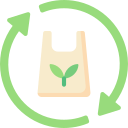From Bin to New Yarn: How Fabric Recycling Works
Effective recycling begins with accurate sorting by fiber blend, color, and condition. Facilities combine trained eyes with near-infrared scanners and emerging digital product passports, separating cotton from polyester, noting elastane content, and prioritizing clean, mono-material items that can be most efficiently transformed.
From Bin to New Yarn: How Fabric Recycling Works
Mechanical recycling shreds textiles into fibers for re-spinning or nonwovens, often blending with some virgin material for strength. Chemical routes depolymerize polyester back to building blocks or dissolve cellulose from cotton, enabling higher-quality outputs and the possibility of true fiber-to-fiber renewal at meaningful scale.



